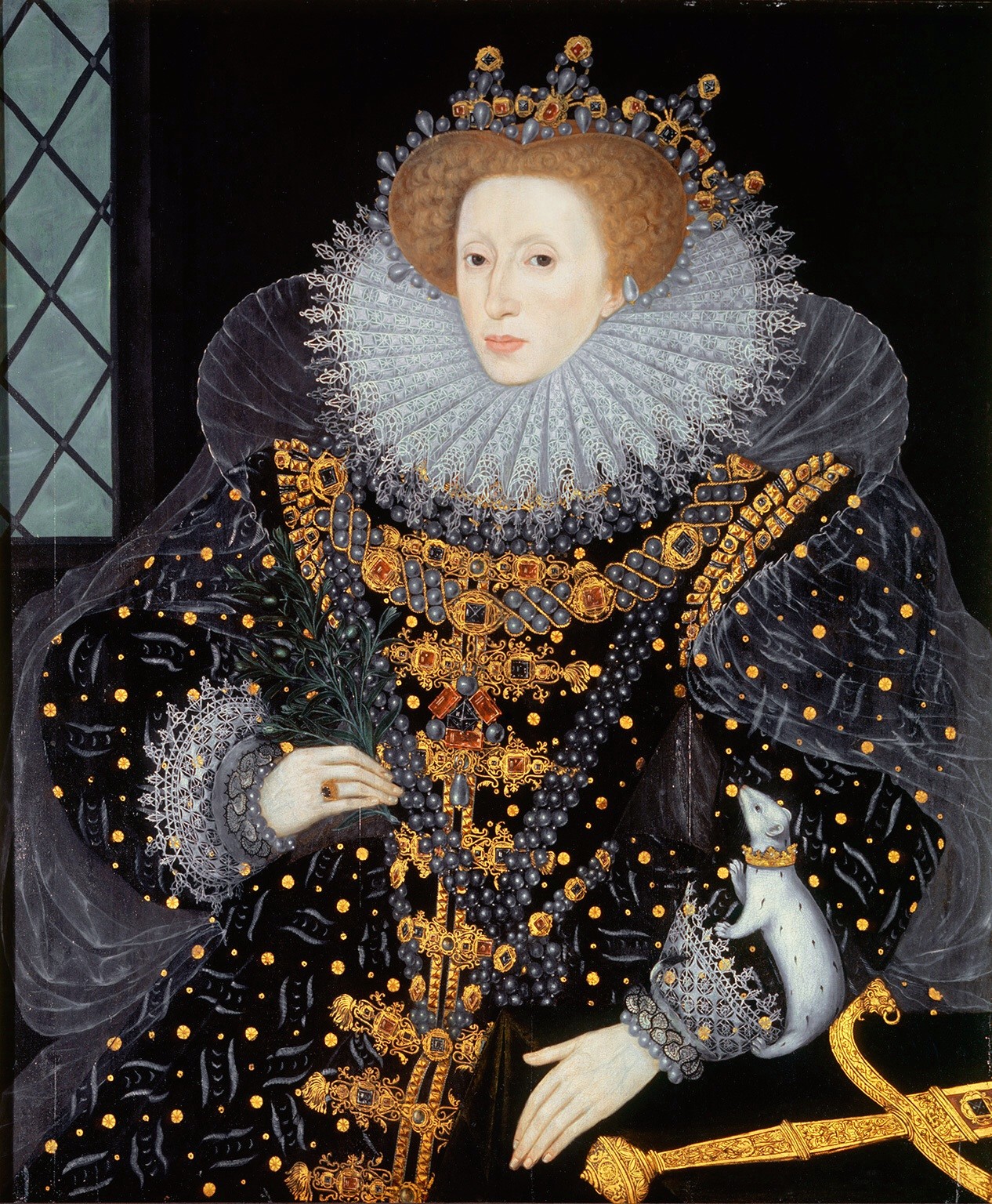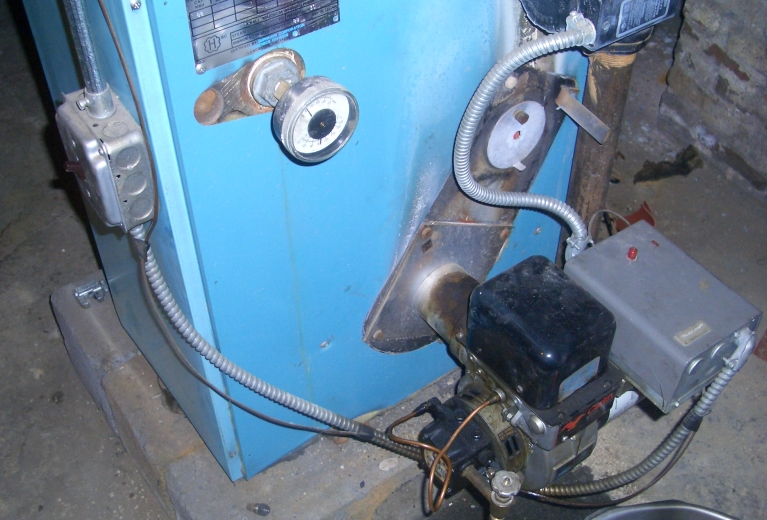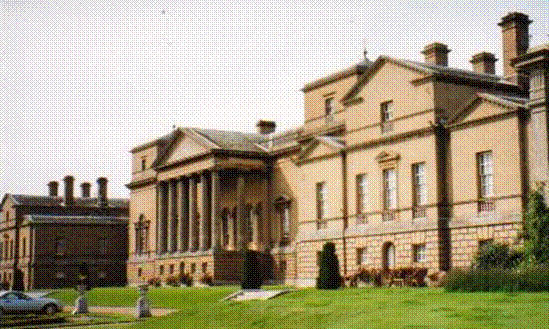|
Chauncey Fitch Skilling
Chauncey Fitch Skilling (December 7, 1868 – February 14, 1945) was an architect from Los Angeles, California who was also a member of that city's school board and of its city council. Personal Skilling was born on December 7, 1868 in Manchester, Illinois, the son of Josiah Hamilton Skilling of Ireland and Margaret Lucy Thompson of Athens, Ohio. His brothers were Edward H., William T. and Robert P. Coming to Los Angeles in 1886, he attended Los Angeles State Normal School and the University of Southern California (1892), followed by a year at a business college (1893). He was a Presbyterian and a Republican. Residing at 1051 S. Lucerne Boulevard, he died of pneumonia at the age of 78 on February 14, 1945. Skilling was survived by brothers William T. of San Diego, California, and Robert P. of Newark, New Jersey. Chief structural engineer of the World Trade Center, John Skilling, was a relative, the grandson of his brother Edward. Architecture His first recorded job was as a ... [...More Info...] [...Related Items...] OR: [Wikipedia] [Google] [Baidu] |
Manchester, Illinois
Manchester is a village in southeast Scott County, Illinois, United States. As of the 2000 census, the village population was 354. It is part of the Jacksonville Micropolitan Statistical Area. Geography Manchester is located at (39.541840, -90.329390). According to the 2010 census, Manchester has a total area of , all land. Demographics As of the census of 2000, there were 354 people, 136 households, and 99 families residing in the village. The population density was . There were 147 housing units at an average density of . The racial makeup of the village was 100.00% White. There were 136 households, out of which 33.1% had children under the age of 18 living with them, 64.7% were married couples living together, 5.1% had a female householder with no husband present, and 27.2% were non-families. 22.1% of all households were made up of individuals, and 11.8% had someone living alone who was 65 years of age or older. The average household size was 2.60 and the average family ... [...More Info...] [...Related Items...] OR: [Wikipedia] [Google] [Baidu] |
English Renaissance
The English Renaissance was a Cultural movement, cultural and Art movement, artistic movement in England from the early 16th century to the early 17th century. It is associated with the pan-European Renaissance that is usually regarded as beginning in Italy in the late 14th century. As in most of the rest of northern Europe, England saw little of these developments until more than a century later. Renaissance style and ideas, however, were slow to penetrate England, and the Elizabethan era in the second half of the 16th century is usually regarded as the height of the English Renaissance. However, many scholars see its beginnings in the early 16th century, during the reign of Henry VIII. The English Renaissance is different from the Italian Renaissance in several ways. The dominant art forms of the English Renaissance were literature and music. Visual arts in the English Renaissance were much less significant than in the Italian Renaissance. The English period began far later than ... [...More Info...] [...Related Items...] OR: [Wikipedia] [Google] [Baidu] |
List Of Los Angeles Historic-Cultural Monuments On The East And Northeast Sides
This is a list of Los Angeles Historic-Cultural Monuments on the East and Northeast Sides of the city of Los Angeles, California, in the United States. There are more than 140 Los Angeles Historic-Cultural Monuments (LAHCM) in this area. It includes the communities of Boyle Heights, Los Angeles, Boyle Heights, Highland Park, Los Angeles, Highland Park, Eagle Rock, Los Angeles, Eagle Rock, Lincoln Heights, Los Angeles, Lincoln Heights, Mt. Washington, Los Angeles, Mt. Washington, Hermon, Los Angeles, Hermon, Garvanza, Los Angeles, Garvanza and Montecito Heights, Los Angeles, Montecito Heights. They are designated by the City's Cultural Heritage Commission. Current and former Historic-Cultural Monuments Non-HCM historic sites recognized by state and nation See also Lists of L.A. Historic-Cultural Monuments * List of Los Angeles Historic-Cultural Monuments in Downtown Los Angeles, Historic-Cultural Monuments in Downtown Los Angeles * List of Los Angeles Historic-Cultural Mo ... [...More Info...] [...Related Items...] OR: [Wikipedia] [Google] [Baidu] |
Lincoln Heights, Los Angeles
Lincoln Heights is one of the oldest neighborhoods in Los Angeles, California, United States. It was originally called "East Los Angeles" from 1873 to 1917. It is a densely populated, mostly Latino and Asian neighborhood. It includes many historic landmarks and was known as "the Bedroom of the Pueblo". History Yaangna Village was located on what is now the current day site of Downey Park on Albion and Avenue 17. Lincoln Heights is considered to be one of the oldest neighborhoods outside of La Placita / Sonoratown dating to the 1870s and is found wholly within the original Spanish four leagues pueblo of the Los Angeles land grant. Located on bluffs overlooking the Los Angeles River and immersed in the floodplain, Lincoln Heights river adjacent land became the city's first Industrial Corridor. Aided by slave labor of the Kizh, it later became the home to some of the city's most notable downtown industrialists, who built numerous Victorian homes, some of which have been preserved u ... [...More Info...] [...Related Items...] OR: [Wikipedia] [Google] [Baidu] |
Water Heating
Water heating is a heat transfer process that uses an energy source to heat water above its initial temperature. Typical domestic uses of hot water include cooking, cleaning, bathing, and space heating. In industry, hot water and water heated to steam have many uses. Domestically, water is traditionally heated in vessels known as ''water heaters'', ''kettles'', ''cauldrons'', ''pots'', or ''coppers''. These metal vessels that heat a batch of water do not produce a continual supply of heated water at a preset temperature. Rarely, hot water occurs naturally, usually from natural hot springs. The temperature varies with the consumption rate, becoming cooler as flow increases. Appliances that provide a continual supply of hot water are called ''water heaters'', ''hot water heaters'', ''hot water tanks'', ''boilers'', ''heat exchangers'', ''geysers'' (Southern Africa and the Arab world), or ''calorifiers''. These names depend on region, and whether they heat potable or non-potable w ... [...More Info...] [...Related Items...] OR: [Wikipedia] [Google] [Baidu] |
Furnace (house Heating)
A furnace (American English), referred to as a heater or boiler in British English, is an appliance used to generate heat for all or part of a building. Furnaces are mostly used as a major component of a central heating system. Furnaces are permanently installed to provide heat to an interior space through intermediary fluid movement, which may be air, steam, or hot water. Heating appliances that use steam or hot water as the fluid are normally referred to as a residential steam boilers or residential hot water boilers. The most common fuel source for modern furnaces in North America and much of Europe is natural gas; other common fuel sources include LPG (liquefied petroleum gas), fuel oil, wood and in rare cases coal. In some areas electrical resistance heating is used, especially where the cost of electricity is low or the primary purpose is for air conditioning. Modern high-efficiency furnaces can be up to 98% efficient and operate without a chimney, with a typical gas fur ... [...More Info...] [...Related Items...] OR: [Wikipedia] [Google] [Baidu] |
Bathrooms
A bathroom or washroom is a room, typically in a home or other residential building, that contains either a bathtub or a shower (or both). The inclusion of a wash basin is common. In some parts of the world e.g. India, a toilet is typically included in the bathroom; in others, the toilet is typically given a dedicated room separate from the one allocated for personal hygiene activities. In North American English the word 'bathroom' is sometimes used to refer to any room in a residence that contains a toilet, regardless of the inclusion of a bath or shower. Historically, bathing was often a collective activity, which took place in public baths. In some countries the shared social aspect of cleansing the body is still important, as for example with '' sento'' in Japan and the "Turkish bath" (also known by other names) throughout the Islamic world. Variations and terminology The term for the place used to clean the body varies around the English-speaking world, as does the ... [...More Info...] [...Related Items...] OR: [Wikipedia] [Google] [Baidu] |
Dressing Room
A changing-room, locker-room, (usually in a sports, theater, or staff context) or changeroom (regional use) is a room or area designated for changing one's clothes. Changing-rooms are provided in a semi-public situation to enable people to change clothes with varying degrees of privacy. A fitting room, or dressing room, is a room where people try on clothes, such as in a department store. Separate changing-rooms may be provided for men and women, or there may be a non-gender-specific open space with individual cubicles or stalls, as with unisex public toilets. Many changing rooms include toilets, sinks and showers. Sometimes a changing room exists as a small portion of a restroom/washroom. For example, the men's and women's washrooms in Toronto's Dundas Square (which includes a water play area) each include a change area which is a blank counter space at the end of a row of sinks. In this case, the facility is primarily a washroom, and its use as a changing room is minimal, ... [...More Info...] [...Related Items...] OR: [Wikipedia] [Google] [Baidu] |
Bedrooms
A bedroom or bedchamber is a room situated within a residential or accommodation unit characterised by its usage for sleeping and sexual activity. A typical western bedroom contains as bedroom furniture one or two beds (ranging from a crib for an infant, a single or twin bed for a toddler, child, teenager, or single adult to bigger sizes like a full, double, queen, king or California king astern or waterbed size for a couple, a clothes closet, and bedside table and dressing table, both of which usually contain drawers. Except in bungalows, ranch style homes, ground floor apartments, or one-storey motels, bedrooms are usually on one of the floors of a dwelling that is above ground level. History In larger Victorian houses it was common to have accessible from the bedroom a boudoir for the lady of the house and a dressing room for the gentleman. Attic bedrooms exist in some houses; since they are only separated from the outside air by the roof they are typically cold in win ... [...More Info...] [...Related Items...] OR: [Wikipedia] [Google] [Baidu] |
Servants' Quarters
Servants' quarters are those parts of a building, traditionally in a private house, which contain the domestic offices and staff accommodation. From the late 17th century until the early 20th century, they were a common feature in many large houses. Sometimes they are an integral part of a smaller house—in the basements and attics, especially in a town house, while in larger houses they are often a purpose-built adjacent wing or block. In architectural descriptions and guidebooks of stately homes, the servants' quarters are frequently overlooked, yet they form an important piece of social history, often as interesting as the principal part of the house itself. Origins Before the late 17th century, servants dined, slept and worked in the main part of the house with their employers, sleeping wherever space was available. The principal reception room of a house—often known as the great hall—was completely communal regardless of hierarchy within the household. Before th ... [...More Info...] [...Related Items...] OR: [Wikipedia] [Google] [Baidu] |
Kitchen
A kitchen is a room or part of a room used for cooking and food preparation in a dwelling or in a commercial establishment. A modern middle-class residential kitchen is typically equipped with a stove, a sink with hot and cold running water, a refrigerator, and worktops and kitchen cabinets arranged according to a modular design. Many households have a microwave oven, a dishwasher, and other electric appliances. The main functions of a kitchen are to store, prepare and cook food (and to complete related tasks such as dishwashing). The room or area may also be used for dining (or small meals such as breakfast), entertaining and laundry. The design and construction of kitchens is a huge market all over the world. Commercial kitchens are found in restaurants, cafeterias, hotels, hospitals, educational and workplace facilities, army barracks, and similar establishments. These kitchens are generally larger and equipped with bigger and more heavy-duty equipment than a residential ... [...More Info...] [...Related Items...] OR: [Wikipedia] [Google] [Baidu] |
Dining Room
A dining room is a room (architecture), room for eating, consuming food. In modern times it is usually adjacent to the kitchen for convenience in serving, although in medieval times it was often on an entirely different floor level. Historically the dining room is furnished with a rather large dining table and several dining chairs; the most common shape is generally rectangular with two armed end chairs and an even number of un-armed side chairs along the long sides. History In the Middle Ages, upper class, upper-class British people, Britons and other European nobility in castles or large manor houses dined in the great hall. This was a large multi-function room capable of seating the bulk of the population of the house. The family would sit at the head table on a raised dais, with the rest of the population arrayed in order of diminishing rank away from them. Tables in the great hall would tend to be long trestle tables with benches. The sheer number of people in a Grea ... [...More Info...] [...Related Items...] OR: [Wikipedia] [Google] [Baidu] |








_(7563655820).jpg)